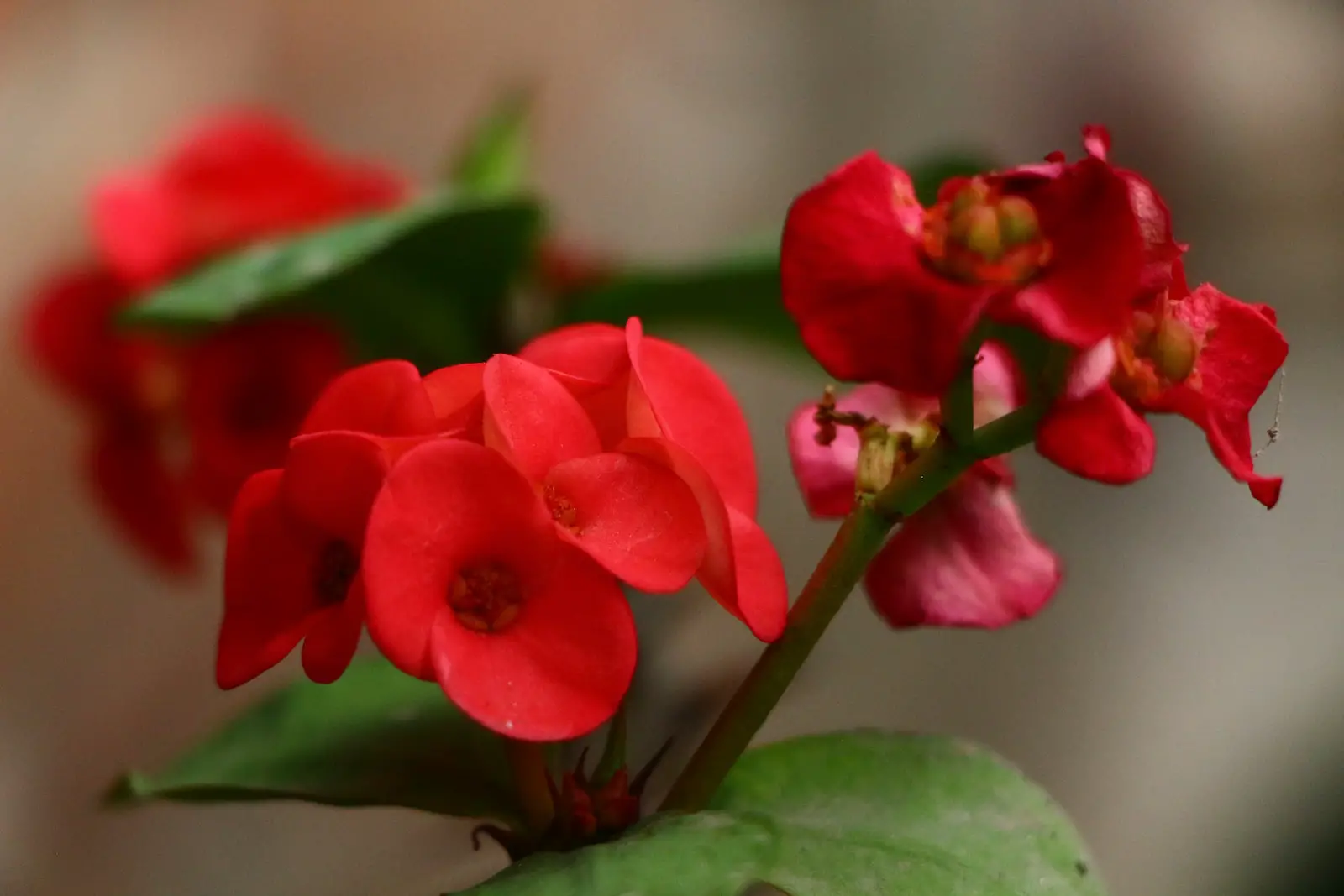The Crown of Thorns, also known as Christ Plant or Christ Thorn, is an alluring succulent plant that is part of the spurge family (Euphorbiaceae). Characterized by its dense spiny stems and vibrant, small, petal-like bracts that surround the actual flowers, it brings an intriguing and unique aesthetic to gardens and indoor spaces alike.
Native to Madagascar, the Crown of Thorns has a rich history, with legends associating it with the biblical crown of thorns worn by Christ. This symbolism, combined with the plant’s appearance, has contributed to its common name.
The Crown of Thorns is not only known for its distinctive appearance but also for its resilience. It can thrive in various conditions, making it an accessible choice for both novice and experienced gardeners. However, particular care must be taken with its toxic latex, which can irritate the skin and be harmful if ingested.
| Attribute | Details |
|---|---|
| Common Names | Crown of Thorns, Christ Plant, Christ Thorn |
| Botanical Name | Euphorbia milii |
| Family | Euphorbiaceae |
| Plant Type | Succulent Shrub |
| Mature Size | 3-6 feet tall |
| Sun Exposure | Full Sun to Partial Shade |
| Soil Type | Well-Drained, Sandy Soil |
| Hardiness Zones | 9-11 |
| Native Area | Madagascar |
Crown of Thorns Care
The Crown of Thorns is a relatively easy plant to care for, especially for those familiar with succulent care. It is drought-tolerant and doesn’t require constant attention. The main factors to consider for optimal growth include providing the right amount of light, maintaining proper watering routines, and ensuring that the plant is planted in suitable soil.
Pruning and fertilizing are also essential, but over-pruning or over-fertilizing should be avoided as it may lead to adverse effects. Care must also be taken when handling the plant to avoid contact with its toxic latex.
Light Requirement for Crown of Thorns
The Crown of Thorns thrives in full sun to partial shade. It requires at least 3-4 hours of direct sunlight per day to flourish and produce its colorful bracts.
Soil Requirements for Crown of Thorns
A well-drained, sandy soil is best for the Crown of Thorns. A cactus or succulent mix combined with a bit of coarse sand or perlite can provide the ideal growing environment.
Water Requirements for Crown of Thorns
Watering should be done sparingly, as over-watering can lead to root rot. Allow the soil to dry completely between watering sessions, and reduce watering during the winter months.
Temperature and Humidity
The Crown of Thorns prefers temperatures between 60-75°F. While it can tolerate higher temperatures, frost or freezing conditions can harm the plant. Humidity is generally not a concern for this drought-tolerant plant.
Fertilizer
Fertilizing with a balanced, liquid fertilizer diluted to half strength during the growing season (spring to fall) can enhance growth. Avoid over-fertilizing, as it may lead to weak stems and fewer flowers.
Pruning Crown of Thorns
Pruning can be done to shape the plant and encourage bushier growth. It’s best done in late winter or early spring. Wear gloves to avoid contact with the latex.
Propagating Crown of Thorns
Propagation is typically done through stem cuttings. Cut a healthy stem, allow it to dry for a few hours to form a callus, then plant it in well-draining soil.
How To Grow Crown of Thorns From Seed
Growing Crown of Thorns from seed is possible but challenging. Plant seeds in a well-draining soil mix and keep in a warm, bright location. Patience is required, as germination can be slow.
Common Pests & Plant Diseases
Spider Mites
Keep an eye on fine webbing, and treat with insecticidal soap if needed.
Root Rot
Caused by over-watering, root rot can be avoided by proper watering practices.
Common Problems With Crown of Thorns
Yellow Leaves
Over-watering or poor drainage may cause yellow leaves.
Lack of Blooms
Insufficient light or nutrients may result in a lack of flowering.
Pro Tips
- Avoid over-watering; allow soil to dry between watering.
- Provide ample sunlight for vibrant bracts and flowers.
- Use gloves when handling to avoid contact with toxic latex.
- Keep away from pets and children, as the latex can be harmful if ingested.
- Prune carefully to shape the plant and encourage bushy growth.




